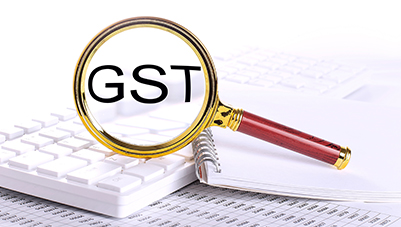The Government of India has introduced important changes to GST, called GST Reforms 2.0, which came into effect on September 22, 2025. These reforms have made the tax system simpler with clearer tax slabs, lowered GST rates on many goods, and easier compliance rules. These changes are already transforming the tax system and are designed to support economic growth.
What are the GST Reforms 2.0?
GST Reforms 2.0 are a complete update approved by the GST Council to make India’s indirect tax system easier. The main goals of these reforms—such as simplifying tax rates, improving the system’s structure, and upgrading technology—have been achieved to help better governance and make doing business easier.
Three pillars of GST Reforms 2.0 in India, 2025
GST Reforms 2.0 were a complete update based on three main ideas:
- Rate Rationalisation: The old tax rates have been simplified. Items in the 12% and 28% slabs were moved to new 5% or 18% rates. A new 40% tax was added on luxury and sin goods to protect government revenue.
- Structural Correction: The reforms fixed problems like inverted duty structures, improved the flow of input tax credit (ITC), and made compliance easier, especially for SMEs.
- Ease of Compliance: The government introduced faster GST refunds and automated processes to reduce mistakes and delays, making it simpler and quicker for taxpayers.
Key GST Rate and Slab Changes in GST Reform 2.0
The GST reform has brought a major change to the tax rate structure. The earlier 12% and 28% slabs have mostly been removed, with many items now falling under new, simplified rates.
Here’s a summary of the key changes, effective from 22 September 2025:
| Item | Old GST Rate | New GST Rate (from 22 Sept 2025) |
|---|---|---|
| Refrigerators & Air Conditioners | 28% | 18% |
| Television sets | 28% | 18% |
| Small cars | 28% + 1% or 3% cess | 18% |
| Premium motorcycles (>350cc) | 28% + up to 15% cess | 40% |
| Luxury cars | 28% + 22% cess | 40% |
| Cigarettes & soft drinks | 28% + up to 15% cess | 40% |
| Butter, ghee, almonds | 12% | 5% |
| Processed foods (jams, pickles) | 12% | 5% |
| Mobile phones | 12% | 18% |
| Umbrellas | 12% | 5% |
Key Sector-Specific Changes in GST Reform 2.0
The GST Council’s reforms have given a direct boost to certain sectors by making many products more affordable for the average person. These changes are expected to increase consumer spending and support business growth.
| Sector | Old GST Rate | New GST Rate (Effective 22 Sept 2025) | Expected Impact |
|---|---|---|---|
| Daily Essentials & FMCG | 12% or 18% | 5% | Lower prices for consumers and higher sales for FMCG companies. |
| Automobiles | Small cars: 28% + cess Large cars: 28% + cess | Small cars: 18% Large cars: 40% | Cars become more affordable, boosting demand especially during festivals. |
| Consumer Electronics | 28% | 18% | Cheaper TVs and ACs are expected to increase sales and refresh demand. |
| Insurance | 18% | 0% | Life and health insurance policies are exempt, supporting wider insurance coverage. |
| Cement & Textiles | Cement: 28% Textiles: 12% | Cement: 18% Textiles: 5% | Lower costs help boost construction and make textiles more competitive. |
| Agriculture | 12% | 5% | Reduced rates on fertilizers, tractors, and machinery improve affordability and rural demand. |
| Luxury & Sin Goods | 28% + cess | 40% | Higher tax discourages consumption and helps government revenue. |
Impact of GST Reforms 2.0 on Consumers
The reforms have helped consumers by making many products more affordable, which increases household savings and disposable income.
- Lower Prices on Everyday Goods: Many daily essentials like packaged foods, shampoos, soaps, and small household items have seen their tax cut from 12% or 18% to just 5%.
- More Affordable Big-Ticket Items: Consumer products like TVs, air conditioners, and washing machines, which were earlier taxed at 28%, are now at 18%, making them much cheaper.
- Lower Insurance Costs: GST on individual life and health insurance premiums has been removed (previously 18%), making insurance more affordable and helping the government’s “Insurance for All” mission.
- Cheaper Vehicles: GST on small cars and motorcycles under 350cc has dropped from 28% to 18%, making these vehicles easier to buy for the middle class and boosting the auto sector.
Impact of GST Reforms 2.0 on Businesses and Industries
For businesses, the reforms have made processes easier and created a more stable environment, encouraging investment and growth driven by consumer demand.
- Simplified Tax Structure: Moving from many tax slabs to just 5%, 18%, and 40% has reduced confusion, fewer disputes over classification, and made it simpler for businesses to comply with GST.
- Better Cash Flow: Correcting the inverted duty structure in sectors like textiles has reduced the build-up of input tax credit, helping businesses manage their cash flow more effectively.
- Increased Demand: Lower GST rates on many goods and services are expected to boost consumer spending, encouraging companies to produce more and invest in new projects.
- Sector-Specific Benefits: Certain industries have been given a boost. For example, the cement and construction sectors now pay 18% GST instead of 28%, lowering their costs and encouraging real estate growth. The agriculture sector benefits from a 5% rate on machinery and fertilisers, helping farmers directly.
- Luxury Goods Impact: The new 40% tax on super-luxury and sin goods like luxury cars and soft drinks keeps tax revenue steady, balancing the loss from rate cuts in other areas.
Technological Advancements in GST Reform 2.0
The GST Council has introduced important technology upgrades to make compliance easier.
- Simplified E-Invoicing: A new unified portal helps businesses create and manage invoices more easily, cutting down on mistakes.
- Faster Refunds: An automated digital system ensures that businesses with valid refund claims get their GST refunds within a set time.
- Improved GST Portal: The GSTN website has been updated with a user-friendly design and pre-filled GSTR forms to reduce manual work and errors.
- Functional GSTAT: The Goods and Services Tax Appellate Tribunal (GSTAT) is now fully active, helping clear backlogs and offering a quicker way to resolve tax disputes for taxpayers.
GST Reform 2.0: A Festive Season Bonanza
The new GST rates come into effect on September 22, 2025, timed to match the start of the Navratri festival and the festive season in India. This timing is expected to boost consumer spending during this busy period, helping to drive strong economic growth.
Conclusion
GST Reforms 2.0 have brought a major change to India’s indirect tax system by simplifying tax rates, speeding up compliance, and supporting economic growth. By reducing the number of tax slabs and lowering rates on many consumer goods, these reforms have helped both households and businesses. This has created a more stable environment for companies and is expected to encourage growth driven by consumer spending.
For businesses planning to grow or manage costs during this time, taking a business loan could offer useful financial support to take advantage of the improved economic conditions.















